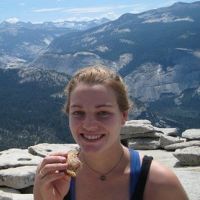Jessup et al., 2010
Erosion, Weathering and Stepped Topography in the Sierra Nevada, California, Quantifying the Dynamics of Hybrid (Soil-Bedrock) Landscapes.
Jessup, B.S., Miller, S.N., Kirchner, J.W., Riebe, C.S. (2010)
Fall meeting, American Geophysical Union, December 2010. Abstract EP41D-0736.
-
Sierra, GRAD STUDENT
-
Sierra, COLLABORATOR
-
Sierra, INVESTIGATOR
Abstract
The dynamics of granitic landscapes are regulated, in part, by bimodal weathering, which produces granular soils and expanses of bare rock ranging from meter-scale boulders to mountain-scale domes. Conceptual models for the evolution of granitic landscapes date back to Gilbert and Penck. Yet few studies have been able to realistically predict the co-occurrence of bedrock and granular soil and its implications for mountain-scale topography -- despite marked advances in quantitative landscape evolution modeling over the last few decades. Here we use terrain analysis, together with cosmogenic-nuclide measurements of erosion and weathering, to quantitatively explore Wahrhaftig's decades-old hypothesis for the development of “stepped topography” by differential weathering of bare and soil-mantled granite. According to this hypothesis, soil-mantled granite weathers much faster than bare granite; thus random erosional exposure of bare rock leads to an alternating sequence of steep, slowly weathering bedrock “steps” and gently sloped, but rapidly weathering, soil-mantled “treads”. Such treads and steps are purported to collectively account for ~2000 m of relief in the southern Sierra Nevada, California, implying that the mechanisms behind the formation of stepped topography may also account for development of mountain-scale relief in granitic landscapes. Our preliminary analysis of granitic terrain in the Sierra Nevada range suggests that steep steps often grade into gentle treads, consistent with the stepped topography hypothesis. Our data and analysis further corroborate the hypothesis with indications that bare granitic rocks erode much more slowly than their soil-mantled counterparts. This suggests that the coupling between soil production and denudation in granitic landscapes harbors a crucial tipping point; if soils are stripped to bedrock, erosion slows and soil formation is restrained to the point that bare rock can persist and rise in relief relative to surrounding soil-mantled terrain. Contrary to one of the main underpinnings of Wahrhaftig’s hypothesis, our observations suggest that the presence or absence of soil cannot be predicted from hillslope gradients alone. Instead, we observe a mix-and-match of soil and bare rock on gently sloped treads and steeply sloped steps. This raises the possibility that exposure of bedrock arises from contrasts in material properties rather than from random erosional exposure, as suggested by the hypothesis. To explore this possibility, we quantified how bedrock strength, mineralogy and bulk chemistry vary among the granitic rock types exposed at our sites. Considered together, our data and analysis contribute to improved understanding of the dynamics of hybrid (bedrock/soil) landscapes by shedding light on feedbacks among erosion, rock strength, mineralogy and degree of chemical weathering in granitic terrain.
Citation
Jessup, B.S., Miller, S.N., Kirchner, J.W., Riebe, C.S. (2010): Erosion, Weathering and Stepped Topography in the Sierra Nevada, California, Quantifying the Dynamics of Hybrid (Soil-Bedrock) Landscapes. Fall meeting, American Geophysical Union, December 2010. Abstract EP41D-0736..
Explore Further



